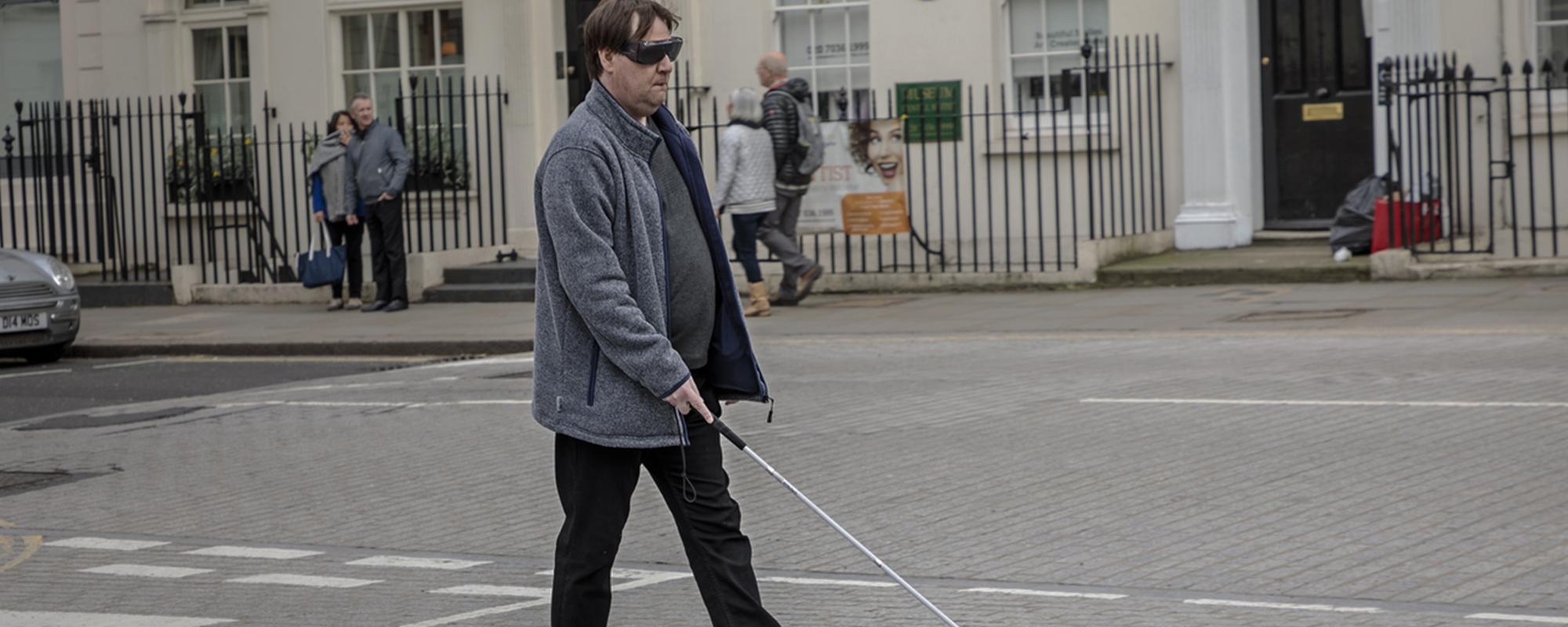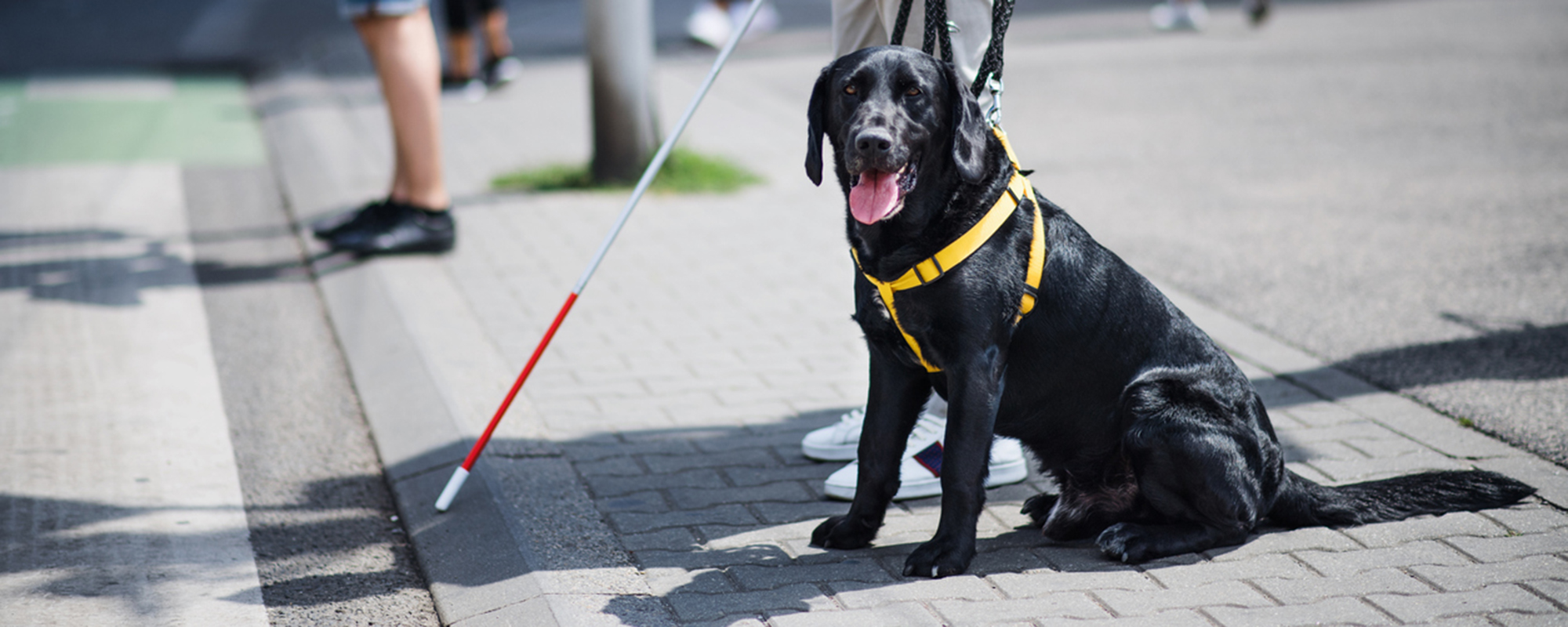Get updates from The Developer straight to your inbox Yes, please!
Shared space or segregated space?
Shared streets were supposed to promote equity and safety, but resulted in the exclusion of the blind and partially sighted. What now for the dream of bringing pedestrians and motorists together? Nile Bridgeman reports

The lockdown that the Covid-19 pandemic triggered emptied streets, closed premises and kept commuters home-bound. Cities have been afforded a unique window to collectively reimagine and transform their public spaces and transport infrastructure, making their communities healthier, happier and more sustainable post-pandemic. Many are turning to the concept of ‘shared space’, an idea centred around equity and safety. Yet, in adopting its principles and doing away with physical barriers, it can create insurmountable obstacles for others.
In the late 70s, Dutch traffic engineer, Hans Monderman, coined the concept of ‘shared space’; a simple idea that not only seeks to make cities safer, but more friendly and more attractive too. His insight? ‘That barriers, railings, kerbs, crossings and even traffic lights - all intended to keep pedestrians and motorists apart - actually discourage both groups from engaging with each other, making life more dangerous.’ Having first been implemented throughout Monderman’s native Netherlands, shared space designs have since spread around the globe, being adopted in hundreds of towns and cities.
Promoting the integration - rather than segregation - of different users and functions created a sense of shared ownership and accountability. Traffic flow is based on engaging with one another, making eye contact, negotiating and being flexible. Increased human interaction typically yields a more enjoyable urban environment.
Monderman’s insight was ‘that barriers, railings, kerbs, crossings and even traffic lights - all intended to keep pedestrians and motorists apart - actually discourage both groups from engaging with each other, making life more dangerous’
However, for people who are blind or with partial sight, the opposite is often true. For the two million people in the UK who suffer from sight loss, shared space schemes often become ‘no-go areas’, as Zoe Courtney, Policy & Campaigns Officer at the Royal National Institute for Blind People (RNIB) explains, ‘key tactile and safety features blind and partially-sighted people rely on are removed’.
Guide dogs need kerbs to navigate. As do long cane users. And when the colour or material changes of paving aren’t detectable, many different forms of sight loss suffer. Tactile paving only works in specific contexts. Coming to the edge of a pavement works in conjunction with an incline – no level change makes it hard to locate or determine what it means. Without this information, people with partial sight are taking a leap of faith.
Steadfastly following the principles of shared space with the intention to engender it’s thoroughly-recorded and widely-documented benefits simultaneously runs the risk of making cities even more exclusive. They remove features essential for navigation, accessibility and inclusion and offset significant advantages for one section of society with a detriment to another.
For the two million people in the UK who suffer from sight loss, shared space schemes often become ‘no-go areas’ – Zoe Courtney, Policy & Campaigns Officer at the Royal National Institute for Blind People (RNIB)
In 2019, following petitions, campaigns and lobbying by a number of concerned organisations, the Government decided to officially recommend that local authorities pause the development of shared space schemes while they review and update their Inclusive Mobility and Tactile Paving guidance as part of their wider Inclusive Transport Strategy. Ultimately, until evidence-based research proves that those suffering from sight loss aren’t excluded from shared spaces, they are being actively discouraged.
Decades of global research into shared spaces suggest a considerable array of statistically-supported benefits: it reduces journey times for all transport, which has the coupled benefit of reducing carbon emissions; it saves money by doing away with barriers, lights, road markings and their maintenance; it also reduces policing costs. It’s easy to see why they are so desirable, despite frequently making areas exclusionary.
An alternative to ‘shared space’, that provides comparable positive outcomes, are ‘simplified streetscapes’, a more moderate concept that retains features important to those with partial sight.
Through implementing simplified streetscape principles, Kensington High Street, in London, saw accidents fall by 44% despite the number of cyclists increasing in the same period. The changes consisted of simplified road markings; recalculating traffic signal timings; introducing additional pedestrian crossings; replacing existing staggered pedestrian crossings with straight crossings; widening of footways and narrowing of carriageway; and removing some street clutter and guard rails.
The borough sought benefits beyond safety. It was an urgent response to local businesses wishing to make their street more attractive against competition from malls in light of falling revenue. They now have a safer, cleaner high street with lower maintenance costs, greater footfall, and increased revenues.
The Royal Borough of Kensington and Chelsea conducted a series of separate surveys on pedestrians and shoppers - including the partially sighted and wheelchair users. The results found that the area was judged to be more attractive, cleaner and safer by most interviewees. Over-65s reported the most significant improvements in safety.
However, these figures don’t distinguish between people suffering from sight-loss from other participants. Little definite research has been done into their experience of shared space. Zoe Courtney of the RNIB noted that ‘one of the massive barriers [in getting case studies] is that people just exclude themselves from shared space schemes’. Those who have been ostracised by the space aren’t around to share their perspective when surveys are conducted. On the surface, simplified streetscapes appear to serve all, but without definitive evidence-based research - which the RNIB is calling for - it is impossible to be certain.
Those who have been ostracised by a shared space aren’t around to give their perspective when surveys are conducted
Prompted by the national lockdown, Hackney Council are acting quickly to implement a research-based approach targeting the health and happiness of its inhabitants. Through rigorous consultation with residents on a variety of 18-month trial measures across numerous neighbourhoods, they aim to build a body of evidence as part of a long-term target to create a more inclusive borough.
Their significant plans include projects that adhere to shared space and simplified streetscape principles, but they are using this moment to test, study and learn from their proposals. Further studies akin to this are needed. Building an eclectic body of research will allow the foundations and successes of shared space to combine with features that cater to every user, every sense and every ability. Shared spaces have a proven potential, but in their current form, they also cause significant harm.
It is absolutely possible to create a space that works for everyone, but not while so many are designed using purely visual principles. Designing for all senses and abilities, and considering how different types of people navigate differently is a requisite of truly inclusive design. Through trialling different concepts, conducting extensive consultation and compiling comprehensive research, cities can to better fulfil their potential to grow in a healthy, sustainable and equitable manner.
Sign up to our newsletter
Get updates from The Developer straight to your inbox
Thanks to our organisation members
Become a member
© Festival of Place - Tweak Ltd., 124 City Road, London, EC1V 2NX. Tel: 020 3326 7238

